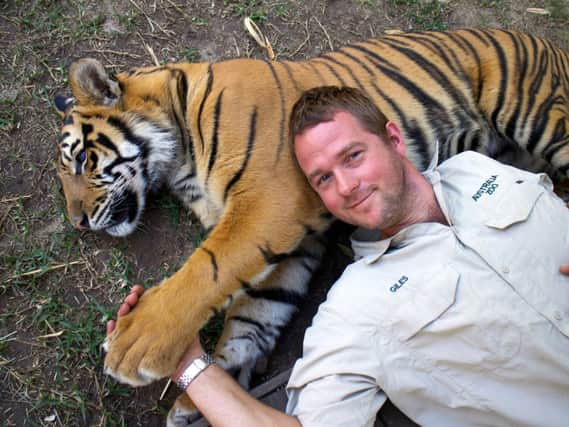TV preview - Tigers about the House: What Happened Next


In this two-part follow-up, we catch up with Spot, Stripe and the Clarkes as the tigers approach their first birthday and impending adulthood. With teenage rebellion building, surrogate dad Giles has his hands full guiding them from adolescence into the realm of “big” tigers, while Spot faces uncertainty about his eyesight and his relationship with Stripe.
With tigers facing extinction in the wild, the Clarke family make a big decision in an effort to safeguard Spot and Stripe’s wild cousins – it’s time to hit the road.
Advertisement
Hide AdAdvertisement
Hide AdKerri and nine-year-old son Kynan join Giles on the road trip of a lifetime through Indonesia, where they see first-hand the challenges facing tigers in their natural home in the rainforests of Sumatra. The family gets up close and personal with some of the jungle’s most iconic species, from orangutans and elephants to tigers.
Giles and his family have to get back to Australia Zoo so Giles can continue his hands-on relationship with the cubs, but not before he donates two new vehicles to the tiger protection unit, vehicles paid for by Spot and Stripe’s activity at the zoo. And Giles’s ambition doesn’t end there. He vows to set up a wild tiger rehabilitation unit in Sumatra with the ambition to release wild tigers maimed by snares and injured by persecution back to the wild.
“In an ideal world all tigers would live in the wild and I would hope, there would be a way for people to see them. But of course this isn’t an ideal world and Sumatran tigers in particular are staring down the barrel of a gun,” says Clarke.
“The tigers in our zoo are part of an international breeding programme as an insurance policy against extinction, and of course this also allows us to show off Sumatran tigers to our visitors.
Advertisement
Hide AdAdvertisement
Hide Ad“Seeing tigers in the wild is incredibly difficult and beyond most people’s reach, so zoos are very important places to see these wonderful big cats. I want the tigers in my zoo to have the best possible quality of life, so my approach is to give them as much stimulation as possible.
“One of the greatest benefits, in my view, from our husbandry approach is we’re able to take our cats out of their enclosures and give them daily walks on leashes in the hundreds of acres of private bushland we have at the zoo. I believe this physical stimulation is hugely important, but even more so is the mental stimulation.”
Tigers about the House: What Happened Next, December 31, BBC2, 7pm